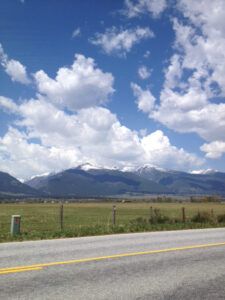
According to Bitterroot National Forest Public Information Officer Tod McKay, the latest public comment period on the Bitterroot Front Project produced over 400 comments, making it one of the most commented upon projects in the Forest’s recent history. Two recent field trips to the project area were also very well attended, according to Stevensville District Ranger Steve Brown. He said 25 to 30 people attended each event and a lot of good comment was received.
“Most of the people were appreciative of the opportunity to get out on the ground and learn about the project,” said Brown. He said, “One woman said ‘I appreciate it because I feel like I have been lied to about what they have been planning up here.’”
Brown said that the comments had been parceled out to the appropriate specialists, sometimes multiple specialists depending upon the types of issues raised, who will consider the issues raised and help provide appropriate responses to the comments.
“They will look at any newly referenced literature and the issues raised, comment by comment,” said Brown.
Brown said that the Forest has called on the services of a couple of forest specialists working nationally as well to come in and help the local teams in planning the project.
One is a fire behavior specialist from the Fire Modeling Institute which is part of the Rocky Mountain Fire Research Center in Missoula.
“Her mission is to take all that fire behavior research and apply it to land management planning,” said Brown. He said she was acting as a fuels management and fire behavior specialist for the project.
“What we are basing it all on is expected fire behavior,” said Brown. “She’s done a ton of modeling all across the Front looking at fire behavior and highlighting the areas where the fire behavior would be abnormal for the habitat type. For example, Ponderosa Pine, Douglas fir, drier sites, where you would expect characteristically low intensity ground fires, but due to suppression through the years or whatever, fuels have built up where you now have uncharacteristic fire behavior predicted. Crown fires where you want to have ground fires. So those will be our priority focus areas, where changing that fire behavior from being more likely to being a crown fire to being more likely a ground fire, so it wouldn’t be a stand replacing event.”
He said they are also identifying those areas where it is currently predicted to be a ground fire. Those would be “our maintenance areas, like Larry and Bass Creek drainages. There is not a whole lot to do there but maintain it and keep it in that status,” said Brown.
He said the fire modeling has mostly been done and ground crews are now going in and verifying the conditions on the ground “because some modeling comes out wrong but some are useful. So, we are trying to make this model as useful as possible.”
The long-term plan, he said, is to use fire as a maintenance tool.
A logging system specialist who works with forests around the country has also been called in to help design their plans with the intent of reducing any new road building by first making full use of the existing system using new techniques for maximizing the safety and efficiency of the current road system.
No timeline for the process has been set, according to Brow, and work on the project has been during the fire season when many of the personnel involved are called elsewhere to work.
“We are still in the sausage making phase,” said Brown. “We are still figuring things out.”
